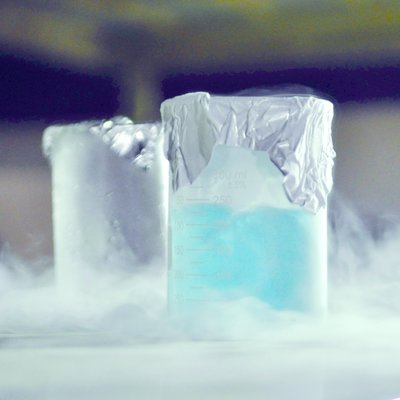
French chemist Antoine Lavoisier (1743-1794) is a celebrated scientist and nobleman who was central to the chemical revolution in the 18th Century. A meticulous experimenter who changed the way chemistry was done and perceived, he had a large influence on how both chemistry and biology developed. While it is impossible to cover everything that Lavoisier achieved in a short article, we will be looking at how one of his predictions came true nearly 100 years later.
A prophetic idea
Lavoisier had a prophetic idea that “[t]he air, or at least some of its constituents, would cease to remain an invisible gas and would turn into the liquid stage. A transformation of this kind would thus produce new liquids of which we as yet have no idea.” Given that until 1877, the dominant thought was that the permanent gases – oxygen, hydrogen, nitrogen and carbon monoxide – were not capable of existing in liquid form, such a statement was indeed beyond his time.
And yet, it did come true. For within days of each other, French physicist Louis Paul Cailletet and Swiss physicist Raoul Pictet arrived independently at methods for the liquefaction of oxygen in December 1877. A whole new field of research and science then opened up.
Born in 1832 into an industrial family, Cailletet was privileged to attend Lycee Henri IV in Paris, and the Ecole des Mines as an unregistered student. He returned to work on his father’s ironworks after his studies, and even though his exact nature of work remains unknown, it is evident that he applied the knowledge he had acquired while studying.
Observations in ironworks
Starting 1856, Cailletet published his studies based on observations in the ironworks and techniques to improve the quality of products. Most of these were presented by French chemist Henri Etienne Sainte-Claire Deville, a person with whom Cailletet shared a friendship that when beyond the typical Parisian scientific environment.
So when Deville became director of the chemistry laboratory at the Ecole Normale Superieure in 1868, it was no surprise that Cailletet also switched to a new series of experiments a year later – experiments that were no longer directly related to observations from ironworks. In 1869, Cailletet started experiments on high-pressure chemistry and most of his publications thereon dealt with compressibility of gases.
In 1877, Cailletet successfully attempted liquefaction of gases with an experimental arrangement based on a compression apparatus. Cailletet paced oxygen and carbon monoxide into his liquefaction apparatus on separate occasions, cooled and compressed them to a specific temperature and pressure and let the gases expand. He observed a thick mist at the end of the expansion and was able to identify that these were the condensed form of both gases.
Deville is in the detail
Cailletet shot a letter to Deville on December 2, 1877, announcing the liquefaction of oxygen and carbon monoxide. Deville had the presence of mind to seal the letter in an envelope and deposit it with the Academie des Sciences. As a result, even when the Academie received a telegram from Pictet on December 22 stating that he had liquefied oxygen, there was no confusion over who got there first.
Pictet denied any priority claim and there was no dispute between the two parties. Pictet and Cailletet arrived at their results using different techniques and both of them were awarded the Davy Medal by the Royal Society of London in 1878.
Pictet proved to be an exception as a number of others jumped in and disputes ensued, Parallel priority claims were a constant theme between 1877 and 1908, during which time all the so-called permanent gases were liquefied. Cailletet’s liquefaction of oxygen had thus heralded cryogenics – a new field of research that concerned itself with the produced and behaviour of materials at very low temperatures.
Picture Credit : Google

